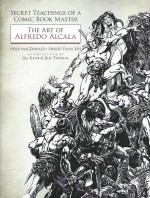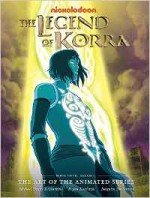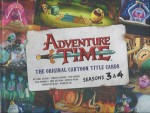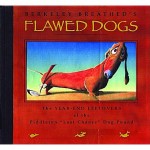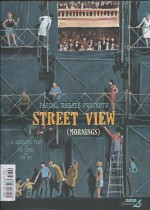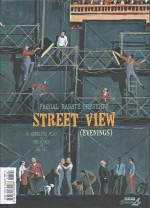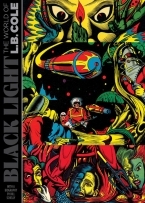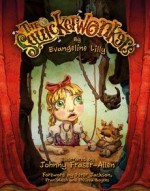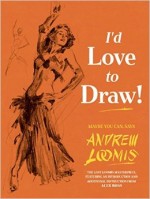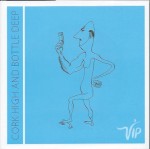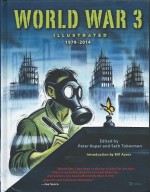
By various, edited by Peter Kuper & Seth Tobocman (PM Press)
ISBN: 978-1-60486-958-3
Since the 1980s and proceeding ever more unchecked into the 21st century, nations and human society have been plagued with horrors and disasters exacerbated if not actually caused by a world-wide proliferation of lying, greedy, venal, demented and just plain stupid bosses and governments.
These paragons have finally succeeded in elevating politicians of every stripe to that phylum of generally useless tools and pimples on the butt of humanity once only occupied by ambulance-chasing lawyers, lifestyle coaches and management consultants.
Since then so many apparently entitled and greedy archetypes like bankers, astrologers, wedding planners, doorstep evangelists, CEOs, celebrity gossip columnists, newspaper editors, the shamelessly privileged and all types of psychics have joined their rarefied ranks, and I’m thinking I probably need to either grow my own provably unadulterated coffee or further refine my critical parameters…
The century before ours wasn’t much better, but it did spawn a global awareness of the sheer symbolic power of art to promote debate, action and change. Politically charged, culturally aware imagery has been used over and over again by the underdogs – and, to be honest, the more savvy oppressors – in countless intellectual clashes as irresistible Weapons of Mass Deliberation…
This is a book that should make you angry and inspired. That is its point and purpose…
Created in response to Ronald Reagan’s presidency – possibly the only thing non-Americans can be thankful to the mad, bible-thumping bastard for – World War 3 Illustrated was founded in 1979 by Pratt Institute art students Peter Kuper and Seth Tobocman in the wake of a rising tide of political conservatism, religious fundamentalism and unchecked capitalist autocracy
The magazine quickly became a beacon and rallying point for artistic activists: a collective collaboration galvanising and powerfully polemical, covering a vast procession of issues the political Powers-That-Be and increasingly law-immune Corporate Hegemonies would prefer were never aired or exposed.
Always championing the ever-diminishing rights of the individual over the juggernaut of rapacious commercial expansion and global monetary domination, the magazine brought – and still brings – together creative freedom-fighters who oppose the insidious wave of creeping everyday injustices through art, information and – most effectively of all – opposing views and dissenting opinions.
Now the smart, informed publishing people of PM Press have released a spectacular and sumptuous hardback retrospective of World War 3 Illustrated; re-presenting some of the graphic gadfly’s greatest moments in a stunning collection no self-aware seditionist could afford to miss at a time when individual freedoms and planetary wellbeing have never been more endangered…
One crucial word of clarification: the Third World War hasn’t been declared and has no recognised Theatre of Operations. It’s an ongoing series of perpetual localised skirmishes intended to replace individuality with homogeneity, freedom with conformity, humanity with faceless consumerism and intellect, spontaneity and self-esteem with a slavish devotion to money and oligarchic, board-sanctioned options from a menu of consumerist choices designed to keep the merchant-machine running…
Stuffed with spot-art and themed chapters fronted by double-page Chapter Icons from Kuper, Scott Cunningham, Sabrina Jones, Tobocman, Susan Willmarth, Kevin C. Pyle, Rebecca Migdal, Sandy Jimenez, Ethan Heitner, Nicole Schulman, Christopher Cardinale and Hilary Allison, this grand bible of creative resistance opens with the rousing and informative ‘Introduction: In Cahoots!’ by veteran activist, educator and reformer Bill Ayers before the parade of artistic action gets underway.
Starting World War 3 reveals the way it all began in the essay ‘Manifesto’, by Tobocman & Kuper, before the early forays are revisited in ‘Old Pals’ by Peter Bagge, whilst “Dr. Froydo Baggins†diagnoses the scatological power structure of modern society in ‘Top Feces’ by Isabella Bannerman & Robert Desmond, and Chuck Sperry’s terrifying collage ‘Bud’ is followed by Tobocman’sstate of disunion revelation in ‘The World is Being Ripped’. The chapter is closed by ‘Dove vs. Technology (back cover #8)’ by Aki Fujiyoshi.
Theocracy unbound is the subject of In God We Trust? opening with ‘Rapture’ – Kuper’s terrifying visualisation of an actual speech by Moral Majority founder Jerry Falwell – after which Erik Drooker moodily relates his ‘First Encounter’ with The Lord and Mike Diana explains how ‘Jesus is Suffering for You’…
Ryan Inzana describes his liberating escape from ‘One Nation Under Fear’ before ‘Pope Exposed (back cover #5)’ by David Shannon leads to the pantomimic revelation of ‘Jesus in Hell’ by James Romberger, and Isabelle Dervaux ends things on a blasphemous high note with ‘Walking on Water’.
The war on women is highlighted in Herstories, opening with Isabella Bannerman’s gripping ‘Herstories (cover #16)’ from 1992. This is followed by the evocative ‘Women’s Rights’ by Paula Hewitt Amram and the harrowing ‘Walking Down the Street’ by Sabrina Jones and a truly disturbing glimpse into the pressures on young girls to have sex in ‘K-9’s First Time’ by K-9 & Fly before Jones scores again with ‘Saudi Woman (back cover #14)’ to close the chapter.
Gentrification and the New York Elite’s attempts to forcibly relocate its poor by Fiscal Ethnic Cleansing are spotlighted in Captive City,beginning with the trenchant ‘Ave A’ by Anton Van Dalen and Tobocman’s ‘Why Are Apartments Expensive?’
Drooker then imaginatively shares some cold, harsh facts and statistics in ‘Shelter from the Storm’, whilst Steve Brodner plays Devil’s Advocate in ‘The Pound’ and Mac McGill interprets ‘Memories’ with apocalyptic panache.
Nicole Schulman then reveals why ‘You Can’t Go Home, Again?’ whilst Tobocman declares ‘War in the Neighorhood’ and Jeff Lewis wistfully bemoans how ‘I Was Raised on the Lower East Side’ to suspend the ongoing class war… until next time…
Autobiology focuses on differences of opinion such as the divisive nature of sneakers in ‘Skips’ by Sandy Jimenez, ineffectual relationships in Bannerman’s ‘No Visible Evidence’ and parenting in Scott Cunningham’s ‘Alien Metaphor’, after which Drooker relates a chilling anecdote in ‘The Fall’ and Kuper details how he was called as an expert witness in Mike Diana’s comics obscenity trial in the ‘Sunshine State’…
The misrule of Law comes under excoriating scrutiny in Under Arrest, opening with ‘Police State America’ by Tobocman, detailing how a black woman in New York was gunned down by a SWAT Team for incurring rent arrears, whilst Drooker’s ‘Coup d’Etat of the Spirit’ movingly recalls a friend who got on the wrong side of a police action…
‘Yard In!’, by Mumia Abu-Jamal & Gregory Benton, wryly pinpoints one of the many cruel insanities endured by Death Row inmates before Drooker’s ‘Prison Issue (cover #24)’ leads to Kevin C. Pyle’s revelatory expose of the mean-spirited “Diesel Therapy†used to break prisoners’ spirits ‘On the Road’. Benton then returns to offer a shred of comfort in ‘#AM-8335’.
Sperry opens the chilling Biohazard section with a bleak confrontation of ‘My Mother, My Mother’ before Pyle produces the most horrifying piece in this collection with his documentary detailing of the grotesque criminal acts of the United States Public Health Service which began a near-forty year long, generational study of syphilis by deliberately withholding antibiotic treatments from the African American community of Macon County, Alabama in the shocking tale entitled ‘Pink Medicine’…
Encroaching environmental catastrophe is the meat of Green House, Blue Planet, beginning with Tobocman’s captivating ‘What You Need to Know’, whilst Rebecca Migdal’s ‘The Food Chain (cover #41)’ precedes ‘Someday in the Future’ by Susan Willmarth, revealing how corporate misuse of the drug Diclofenac led to the near extinction of India’s vulture population and the almost complete destruction of the subcontinent’s food chain.
Drooker’s forbidding illustration ‘Moloch’, then leads to ‘Needle Factory’, a bleak cutting whimsy from Felipe Galindo, after which Sue Coe presents a series of ghastly images created in response to the monstrous Deepwater Horizon disaster in 2006 – ‘Murder in the Gulf’, ‘BP Burns Turtles’ and ‘Sold!’
At least Drooker is there to wrap it up with a hope-filled dream of ‘The Jungle’…
We Y New York opens with the ‘9/11 Release Poster’ by Kuper & Sperry, and an autobiographical reverie in ‘9-11-01’ by Fly, before Ward Sutton briefly interjects a sardonic aside with the ‘Fear News Network’ whilst counterculture pioneer and seasoned campaigner Spain Rodriguez tellingly dissects all stripes of ‘Faith-Based Terrorism’ and Mac McGill offers up another evocative expression of architectural Armageddon in ‘IX XI MMI’…
A discussion of Global Economy and the New World Empire begins with a strident lesson from Nichole Schulman in ‘Fossil Fuel’, whilst Kuper examines the concepts of war for oil in ‘Bombs Away’ and Tom Tomorrow lampoons government rhetoric and corporate Thinkspeak in ‘Are You a Real American?’ after which Chuck Sperry creates a visual icon for the new century in ‘Bush Hates Me’ and Tom Tomorrow hilariously peeks in on ‘Bush Dreams’.
The fertile soil is further ploughed by Sabrina Jones with the cruelly poetic ‘Chronicle of the New Crusade’, and Art Spiegelman doles out a strong dose of satire in his oil-mainlining Uncle Sam pastiche ‘Roll Up Your Sleeves, America!’, which is followed by Kuper’s infamous and controversial ‘Richie Bush in Hell’s Bells’ parody.
By brilliantly employing Harvey Comics’ Richie Rich character, the artist engendered the disapproval of US Customs who subsequently seized copies of this strip when it was reprinted in Slovenian magazine Stripburger…
This chapter closes with ‘Talking Liberties (cover #34)’ by Mirko Ilic and a montage of various works and public events in ‘WW3 Arts in Action’.
Promised Land? examines the ongoing Israeli- Palestinian Conflict, beginning with ‘Casting Stones’ by Drooker before Kuper bares his heart and soul recounting his many trips to Israel and how the country devolved to a point and state he could no longer recognise in ‘Promised Land’, after which Sabrina Jones shares her own personal experiences of time in the Holy Land in ‘Fear and Firecrackers’.
‘Art Against the Wall’ is an photo-illustrated essay by Eric Drooker describing the construction, impact upon and creative response to Israel’s “Security Wall†by the Palestinians it imprisons and isolates; a subject then expanded upon in cartoon form in Tobocman’s biting ‘The Serpent of State’…
Iniquities affecting the wider world come to the fore in Going Global, beginning with ‘The Quiet Occupation’ by Nicole Schulman, examining through specific, documented case histories, the incredible “Get Out of Jail Free†policy afforded to the American military in South Korea under SOFA (Status of Forces Agreement).
This appalling legislation has, since 1967, afforded absolute immunity to US personnel facing prosecution for crimes against the indigenous population ranging from theft and environmental damage to rape and murder…
The case of a San Salvadoran kid unfairly deported follows in Carlo Quispe’s ‘Pulgarcito de las Americas’, as does Jordan Worley’s provocative ‘Land and Liberty (cover #27)’, before a selection from Kuper’s visual diary of life in Mexico – specifically the brutal suppression of a Teacher’s strike – rounds out the chapter in ‘Oaxaca, Oaxaca’…
The horrendous scandal of New Orleans’ Federal abandonment is covered in After the Flood, commencing with an emphatic if subjective impression of ‘Katrina’ by McGill, after which volunteer worker Christopher Cardinale records his thoughts and interactions with hurricane survivors in ‘Coming Together’, whilst McGill records the fate of ‘Mrs. Spencer’s Home’ and Tobocman details the resilience of the people who returned in ‘Post Katrina 2nd Line’…
Attempting to end on lighter terms, Modern Times features outrageous and unbelievable exposé ‘On the Tea Party Trail’ by Kuper, then pictorialises the fine, independent folk of ‘Madison Wisconsin’ courtesy of Susan Semensky Bietila, before Tobocman & Jessica Wehrle delve in detail into the early moments of the ‘Occupy the City’ movement capped by another photo feature of ‘WW3 Arts in Action’ and Drooker’s sublime ‘May Day’ poster.
To add context to the collection Time Line then traces the history of World War 3 Illustrated through a short history of the planet since 1970, augmented by a stunning cover gallery of key issues of the magazine…
The most disheartening thing about this magnificent book is the realisation that so many of these issues – such as globalisation, one-percentism, women’s rights to equal pay and control of their own bodies, the maltreatment and exploitation of prison inmates, the disenfranchisement of African Americans and so much more – are still as being as keenly contested today as they ever were… although surely that’s only a reason to fight even harder and more creatively?
This is a book that belongs in every library and on every school bookshelf, and it most certainly needs to be in the hands of every person who dreams of a fairer, better world…
© 2014 World War 3 Illustrated, Inc. All art, photos and text © 2014, to the individual artists. All rights reserved.
